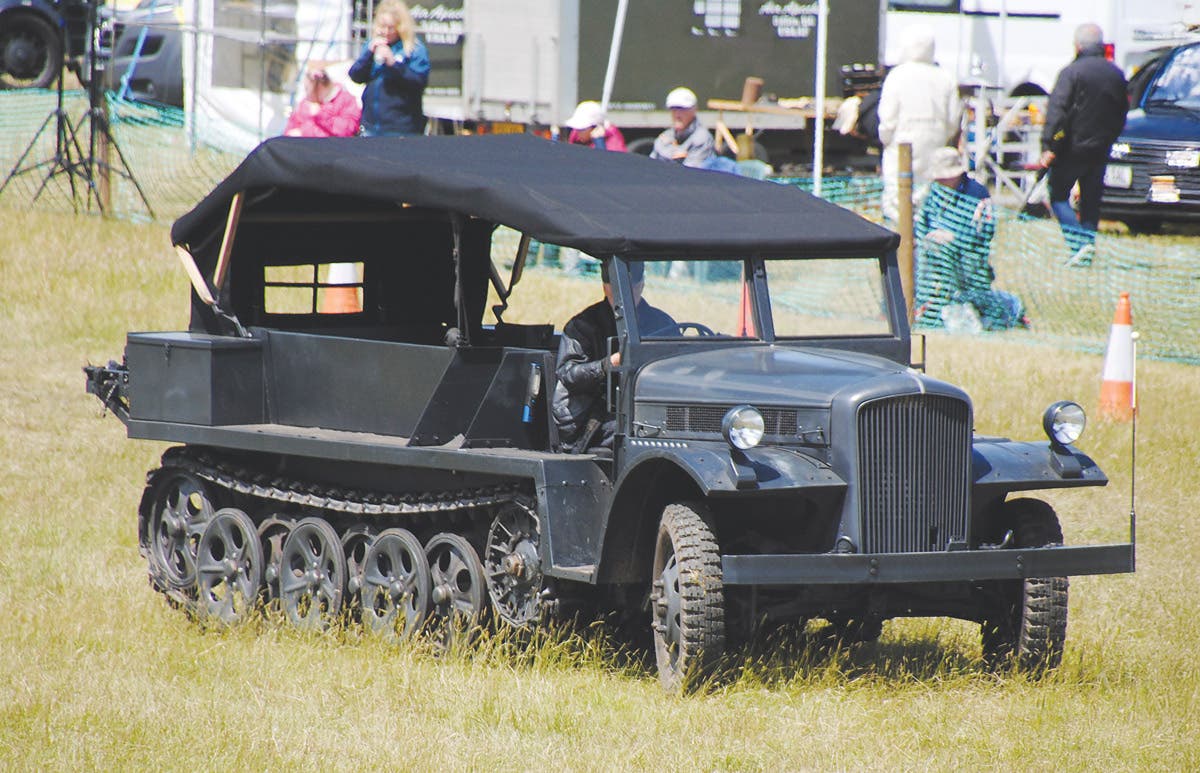Something to haul: 1952 M75 Armored Personnel Carrier
Mark Austin already had a 10-ton M123A1C tractor when the idea occurred to him to acquire some armor. “What is the point of a big truck, if you don’t have anything to pull around?”
Mark Austin already had a 10-ton M123A1C tractor when the idea occurred to him to acquire some armor. “What is the point of a big truck, if you don’t have anything to pull around?” he says. Soon after beginning his search, he found a load worthy of his tractor — a nearly 40,000-lb. armored personal carrier (APC).
Karl Symons, the previous owner of the M75, had acquired the vehicle from a private collector. Symons worked on the M75 for months at a time to get the machine running again. As time went on, Symons and Austin talked about military vehicles, and soon the two worked out a trade. Finally, Austin had some armor to pull around with his M123C1.
The M75 sat in Austin's “motor pool” for more than four years as he gathered his thoughts on how to take on a project of this scale. Knowing it was going to be a time- and energy-consuming operation, Austin worked on gathering the information, the energy, and the time to complete the restoration.
Finally, he decided he had to impose and “end date” on the project, otherwise it might just sit indefinitely. He and his son, Bryan, chose the 25th Anniversary of the Iola Military Show in Iola, Wisconsin, as their target date. With a goal in sight, Mark, Bryan, and friends including Bradley Nitzke, Lenny Langkau, and Tom Feltz began the restoration.
Preserving the Spirit of Daisy’s Luv: She saved lives.
This story about "Daisy’s Luv" tells of an amazing journey of what this machine really went through in its 65 years since coming off the assembly line at the International plant. After the M75 left the United States, it headed over to Korea in the summer of 1952.
At the vehicle’s debut at the Iola Military Show, an old veteran and his grandson came over to the machine to get a close look. As he was looking at the M75, the veteran told us that he was carried out of combat by this M75. I asked him how he knew that it was this machine, and he told me that it was this machine because of the sticker of the border collie on the side of it.
The Austins listen to the rest of this veteran’s story about No. 105. The veteran recalled that each M75 had a bomb-sniffing dog with it when it traveled back and forth to the front. The purpose of these dogs where to detect the enemy mines so that the M75s would not blow out their tracks.
Five M75s, numbered 100-105, were involved in the static-position end of the Korean War shuttling supplies out to forward outposts and wounded men back despite enemy fire trying to stop them. The numbers were painted on these M75s so airplanes could spot the movement of these machine from the air. In fact, soldiers on Pork Chop Hill nicknamed the five vehicles, “The Lifesavers.”
The old veteran recounted how the M75, numbered 105, was sent to haul back the dead and wounded. The vehicle would move, non-stop (other than oil changes and gas) on a 24-hour day. The veteran, who was among the wounded, remembered 105, not because of the large painted number on the side of the hull, but because the of the picture of the bomb-sniffing dog painted next to it.
The veteran was moved to see this machine at the Iola Military Show. He couldn’t believe what he was seeing. He was from Indiana, and Iola was his first show! He told the Austins that he could “die now knowing that his machine was back home and that you men took the time to make this happen.”
The veteran shared a few more memories with Mark and Bryan. “She saved lives," Bryan says of the vehicle. "She is alive with the hearts and spirits she once served. Amen. She’s a testament to those who served and died to protect our freedom.”






